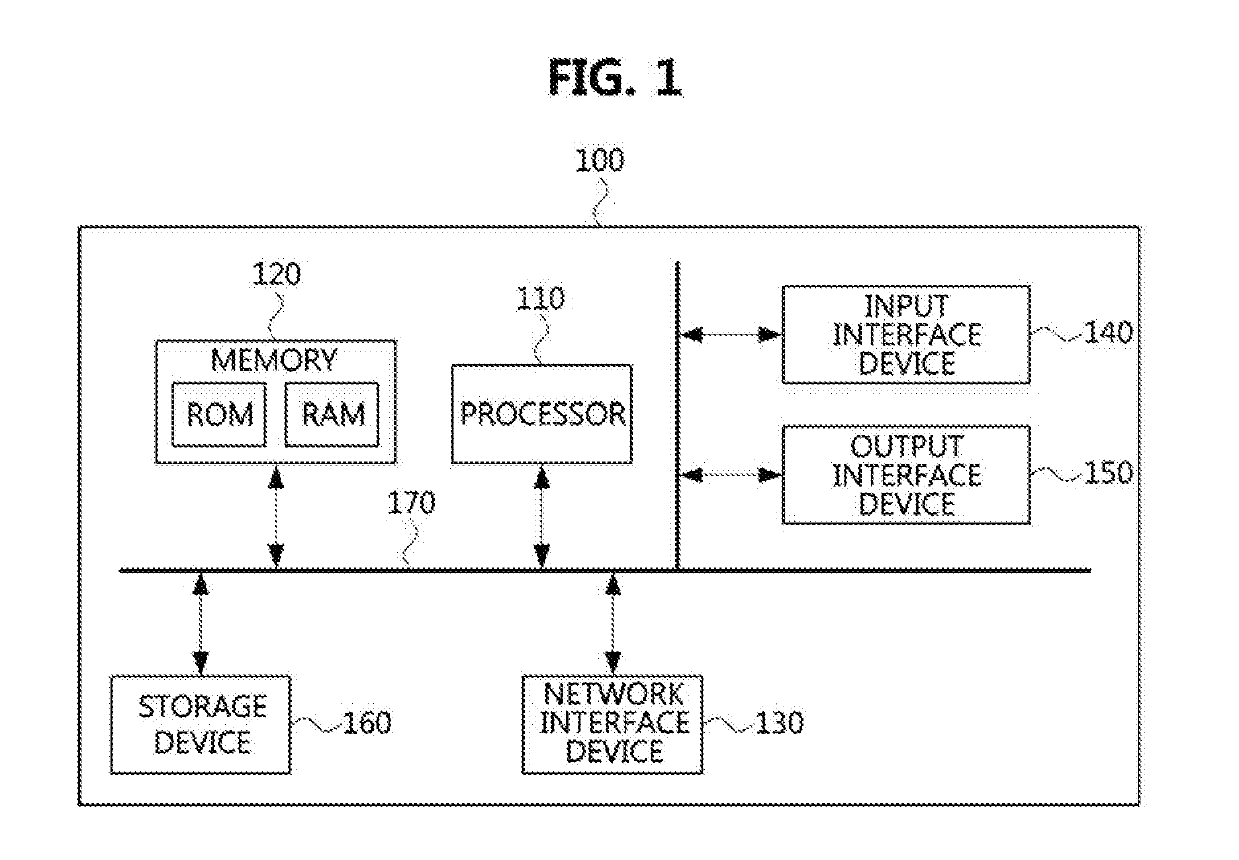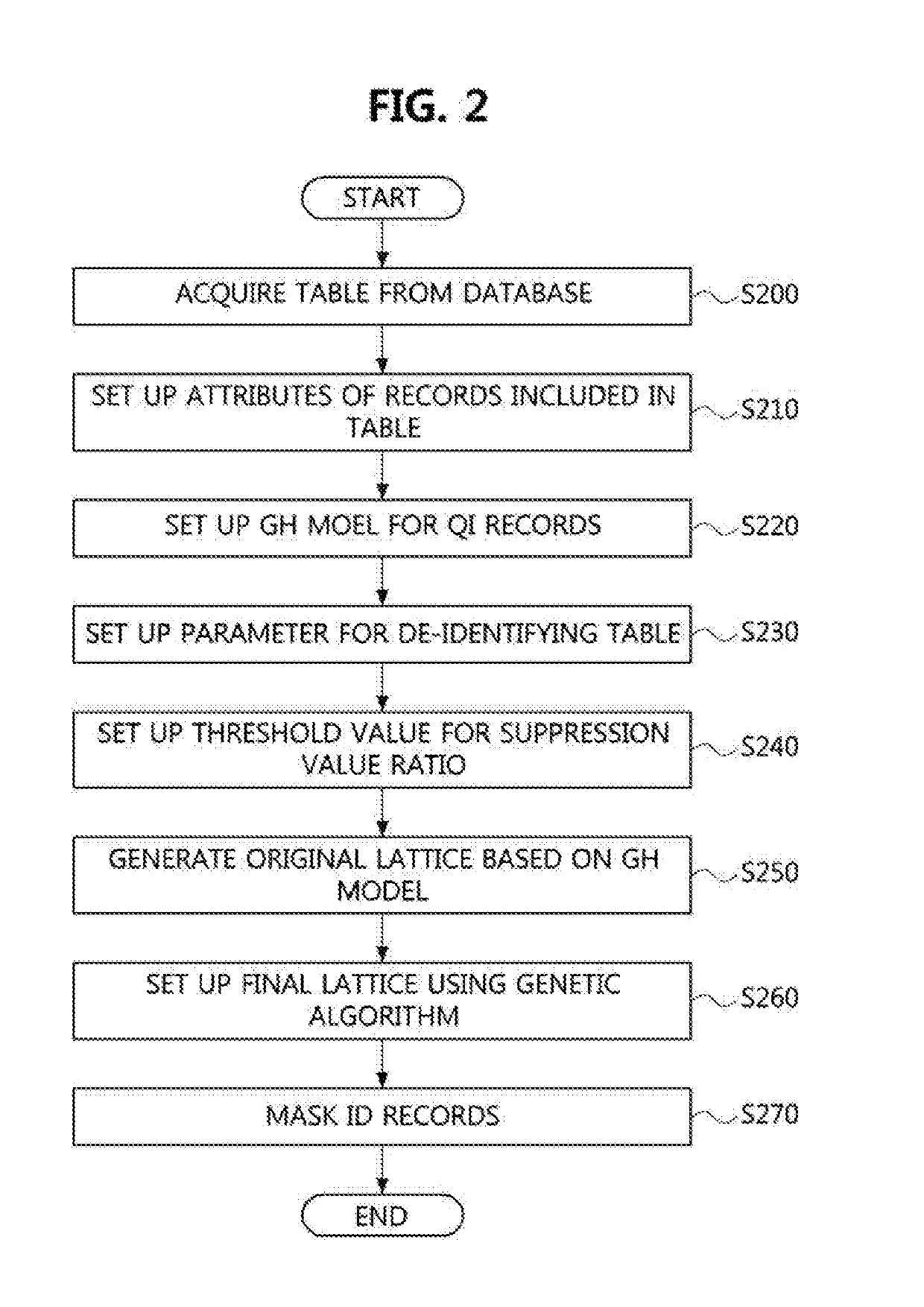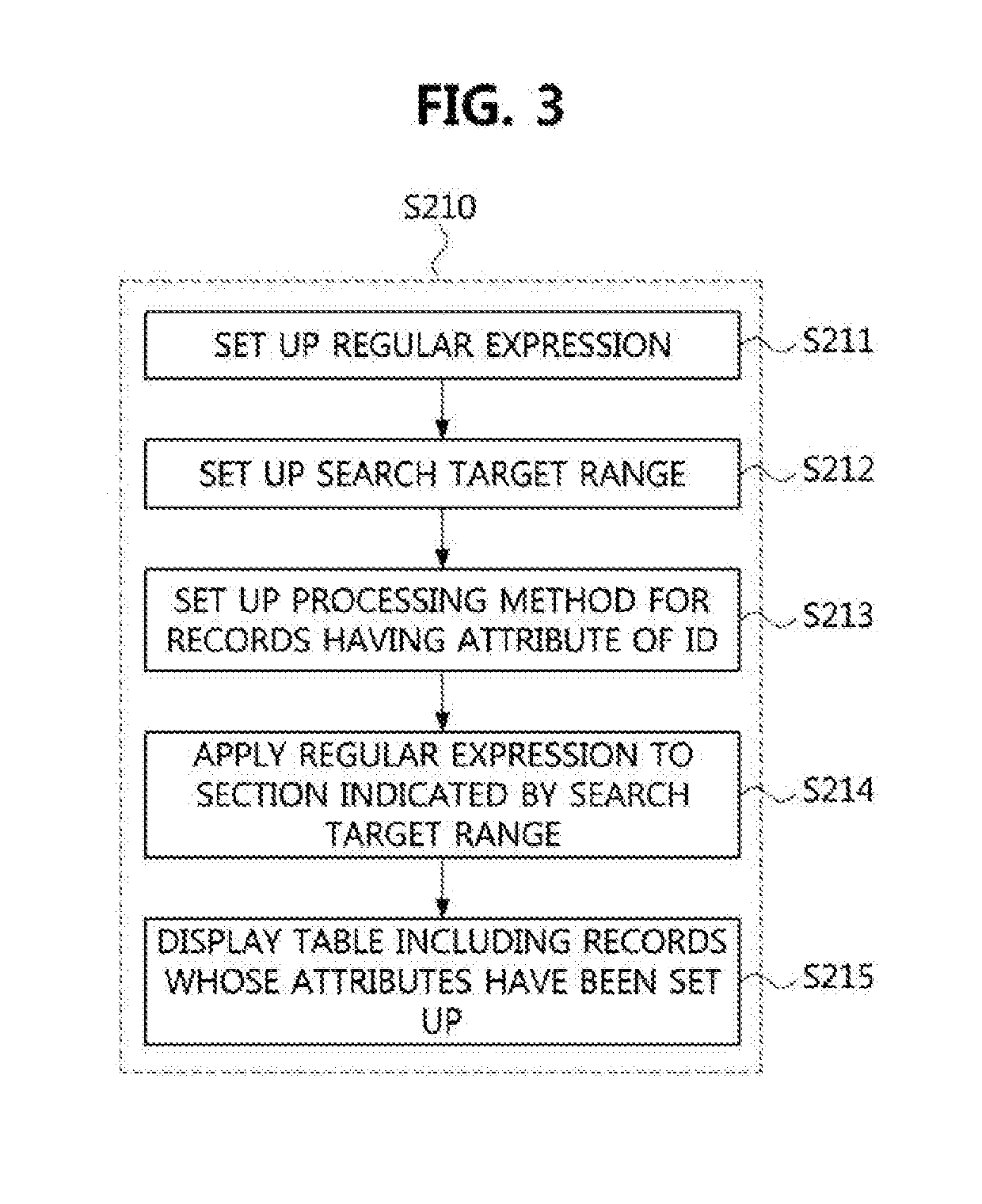Method and apparatus for de-identification of personal information
a technology of personal information and de-identification method, applied in the field of data processing technology, can solve the problems of inability to identify a specific individual, long time may be required to generate de-identification personal information, and the utility of de-identification personal information may be degraded accordingly, so as to achieve the effect of reducing the risk of re-identification improving the utility of de-identification personal information, and improving the use of de-identification personal
- Summary
- Abstract
- Description
- Claims
- Application Information
AI Technical Summary
Benefits of technology
Problems solved by technology
Method used
Image
Examples
case 1
[0136] Method of Setting Up Final Lattice
[0137]The de-identification apparatus 100 may set an arbitrary node to a cross node among nodes belonging to hierarchy-1 which corresponds to ½ height between the lowest hierarchy (i.e., hierarchy-0) and hierarchy-2 to which selection node B belongs in the original lattice and may set an arbitrary node other than selection node B to a variation node among nodes belonging to hierarchy-2 (S263-1). For example, the de-identification apparatus 100 may set “a0, b1, c0” node belonging to hierarchy-1 to a cross node and set “a0, b2, c0” node belonging to hierarchy-2 to a variation node.
[0138]The de-identification apparatus 100 may de-identify tables separately corresponding to the cross node and the variation node (S266). In other words, since the suppression value ratio of de-identified table B is the suppression threshold value or less, tables corresponding to nodes belonging to higher hierarchies than selection node B may not be de-identified. Th...
case 2
[0144] Method of Setting Up Final Lattice
[0145]The de-identification apparatus 100 may set an arbitrary node to a cross node among nodes belonging to hierarchy-3 which corresponds to ½ height between hierarchy-4 to which selection node A belongs and hierarchy-2 to which selection node B belongs in the original lattice and may set an arbitrary node other than selection node A to a variation node among nodes belonging to hierarchy-4 (S264-1). For example, the de-identification apparatus 100 may set “a1, b1, c1” node belonging to hierarchy-3 to a cross node and set “a2, b1, c1” node belonging to hierarchy-4 to a variation node.
[0146]The de-identification apparatus 100 may de-identify tables separately corresponding to the cross node and the variation node (S266). In other words, since the suppression value ratio of de-identified table B exceeds the suppression threshold value, nodes belonging to lower hierarchies than selection node B may not be de-identified. The de-identification app...
case 3
[0152] Method of Setting Up Final Lattice
[0153]The de-identification apparatus 100 may set an arbitrary node to a cross node among nodes belonging to hierarchy-5 which corresponds to ½ height between hierarchy-4 to which selection node A belongs and the highest hierarchy (i.e., hierarchy-6) in the original lattice and may set an arbitrary node other than selection node A to a variation node among nodes belonging to hierarchy-4 (S265-1). For example, the de-identification apparatus 100 may set “a3, b1, c1” node belonging to hierarchy-5 to a cross node and set “a2, b1, c1” node belonging to hierarchy-4 to a variation node.
[0154]The de-identification apparatus 100 may de-identify tables separately corresponding to the cross node and the variation node (S266). The de-identification apparatus 100 may generate de-identified tables which satisfy the de-identification parameter (e.g., K-anonymity, L-diversity, and T-closeness) set up in step S230 described above.
[0155]Also, the de-identific...
PUM
 Login to View More
Login to View More Abstract
Description
Claims
Application Information
 Login to View More
Login to View More - R&D
- Intellectual Property
- Life Sciences
- Materials
- Tech Scout
- Unparalleled Data Quality
- Higher Quality Content
- 60% Fewer Hallucinations
Browse by: Latest US Patents, China's latest patents, Technical Efficacy Thesaurus, Application Domain, Technology Topic, Popular Technical Reports.
© 2025 PatSnap. All rights reserved.Legal|Privacy policy|Modern Slavery Act Transparency Statement|Sitemap|About US| Contact US: help@patsnap.com



